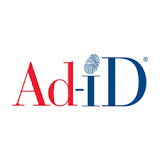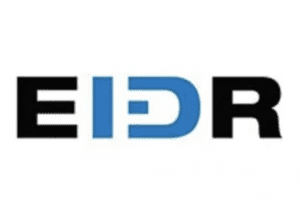In my decade as a data consultant, I’ve become a big
proponent of content labeling to help facilitate the linking of content across
platforms and devices. First spearheaded
by Jane Clarke, CIMM’s CEO and Manager Director in 2009, the labeling
initiative for both ads and content promised to result in a type of universal,
industry-standard UPC code. But it has taken much longer than I personally expected
for the television marketplace. Not only are we are still not there, but it
seems like there has been limited progress while the number and diversity of
platforms and devices proliferate and the global footprint expands.
So I sat down with Will Kreth, Executive Director, EIDR, to
try to understand just what the challenges and obstacles are that are keeping
us from what seems to be a no-brainer – a universally accepted labeling
protocol so that every creator gets the full credit of all of the views for
their content. I wanted to understand what’s going on and why it’s taking so damn
long.
To some in the industry, according to Kreth, content
labeling can involve metadata or behavioral tagging. But for him, content
labeling takes on a much broader definition.
Charlene Weisler:
What is your definition of content labeling?
Will Kreth: We think of it as unique identification of
content to help the media and entertainment supply chain, to help workflows, and
to help the life-cycle of a title. Content identification (through unique,
machine-readable IDs) helps all of the different players / actors in the
ecosystem - in the existing value chain, and also in the aspirational, as yet to-be-realized
value chain.
Weisler: Who is doing
it now and who is not doing it now?
Kreth: We have been strong in the film industry – with now
95% to 100% coverage at first theatrical window for all movies from the top six
(now five) Hollywood studios. However, television
is a major gap for us – in that we have not cracked the code on the motivations
for the networks to look at open standard, unique IDs as a way to improve
audience measurement, generate incremental revenue, and/or lower costs
significantly.
Weisler: Why would TV
not see it while the film industry does see it?
Kreth: For years and years, television didn’t even operate
with external identifiers. Content was shared – the satellite and cable
operators and broadcast networks just used internal IDs – then published
spreadsheets, Word documents or PDFs of program schedule information for print
TV listings and Electronic Program Guides (EPGs). So, television in the
traditional world of the last 30 to 40+ years was very linear. Then, On Demand and
DVRs came – and the VOD platforms developed by cable had an effort around
creating VOD metadata – because they realized that they would be the ones
sending the assets files out to the field to local cable head-ends. They had to
describe them well so they could be ingested into broadcast automation or play-out
systems.
Weisler: How is the television
landscape in content IDs structured?
Kreth: The incumbents were the duopoly between Rovi (now TiVo)
and TMS (the former Tribune Media Services) which absorbed and then rebranded itself
as Gracenote, and now Gracenote is part of Nielsen. The TMS ID has the lion’s
share of usage in North American television broadcasting metadata. It’s the
unique ID that is the incumbent. It took a lot of years to get there through
competition to gain marketshare. Gracenote has become the dominant player in
unique IDs in the United States, but not globally. So there is a vertically
integrated play that the TMS ID is a part of that is now required by Nielsen.
So you now have a unique ID for the majority of U.S. paid TV viewing tied to
the ratings system for the majority of U.S. homes. Through hard work and market
dominance, the TMS ID (which went from Tribune, then Gracenote and now Nielsen),
has achieved somewhat of a winner-take-all-effect.
But there are some hold-outs. Some use TiVo IDs, some don’t
use IDs because they have decided they are not at the end point of the
distribution chain, and some use IDs
from RedBee (formerly FYI Television) or others. Meanwhile, some sources, like electronic program
guides in all of the major set top box manufacturers, had to be standardized.
That process took years to get to a certain level of quality and there are
still a lot of gaps and mismatched metadata and errors. Also, the digital video
recorder pushed a lot of folks towards standardization – because it insisted on
the notion that if you are going to record a program – you need to know exactly
when it starts and stops and what the program is. From a consumer’s point of
view – it would be unacceptable if you got the wrong program at the wrong time.
There was no room for guesswork. And that pushed folks towards the effort for
standardization around television metadata.
Weisler: What about
EIDR today?
Kreth: It’s a different world than just 10, even 5 years
ago. There’s greater complexity and new business models beyond just rated
linear and on-demand television (or legacy DVRs). The challenges of multi-platform
distribution, streaming, and international OTT businesses are helping convince
doubters that the world could do very
well by adopting EIDR’s open standard to
precisely identify the thing itself (content labeling) no matter where it plays or what device it
plays on. Data collection and analytics are no longer a “nice to have” – they
are mission critical. With EIDR’s open ID standard becoming ubiquitous
in TV, costs would go down, innovation
would go up, competition would thrive in a world where title level ID metadata
is shared as a global standard - and not held in any one company’s proprietary ecosystem.
Weisler: So why is it
taking so long?
Kreth: If you are a broadcaster, you would have been working
for years and years to get these systems set up, to get the TMS IDs flowing,
and to get them into broadcast automation systems. Switching to another title ID
or even supporting, side by side, another title ID requires capital or
operating expenditures and that are not often in the budget of the major
networks. Unlike film – which did not have an existing solution, they had
independent data services and when they saw that there could be something like a
universal ISBN number for film and TV - they said, ‘sign us up’ and incubated
the data model structure at Movie Labs (the research and development arm of the
US film industry). So, we have work to do in television. The good news is: We’re making great inroads with TV
broadcasters in Sweden, the Nordics, the UK and EU. Our motto has always been – “Lots of IDs, Low Cost”. We want to make
acquiring and tagging labeling TV (and all video) content with unique EIDR IDs
as easy, painless and inexpensive as possible.
With television – we realized we were up against existing
workflows and lifecycles of how content was flowing and with all of the
vendors, hardware manufacturers, suppliers and operations systems there was no
one place to go. We’re starting to hear from vendors in the television industry
that they’re ready to support EIDR in their software and toolsets. The world would
change in an instant if one of the large US MVPDs said ‘we require EIDR IDs.’ And we see signs that may be happening with at
least one of the major US MVPD’s, especially due to the demonstrable need for
unique IDs in measuring a multitude of data points and KPIs, on multiple
platforms, with a myriad of program titles.
Weisler: Will, knowing
what you know, what do you think the timeline is to get more than critical mass
for television?
Kreth: There is a project we call EIDR 2020, where we’re
pushing to start to see the major US TV distributors and vendors support EIDR
alongside their existing workflows or with their existing IDs. With a sunrise period
for EIDR IDs ubiquity in 2020 – it starts to create that catalyst, the critical
mass to move people off of stasis and inertia and toward embracing and
extending their platforms and their toolsets to support EIDR. Next year will be
our tenth year - so there will be nothing greater than to see an industry-wide
EIDR 2020 sunrise begin in television.
This article first appeared in TVREV.


